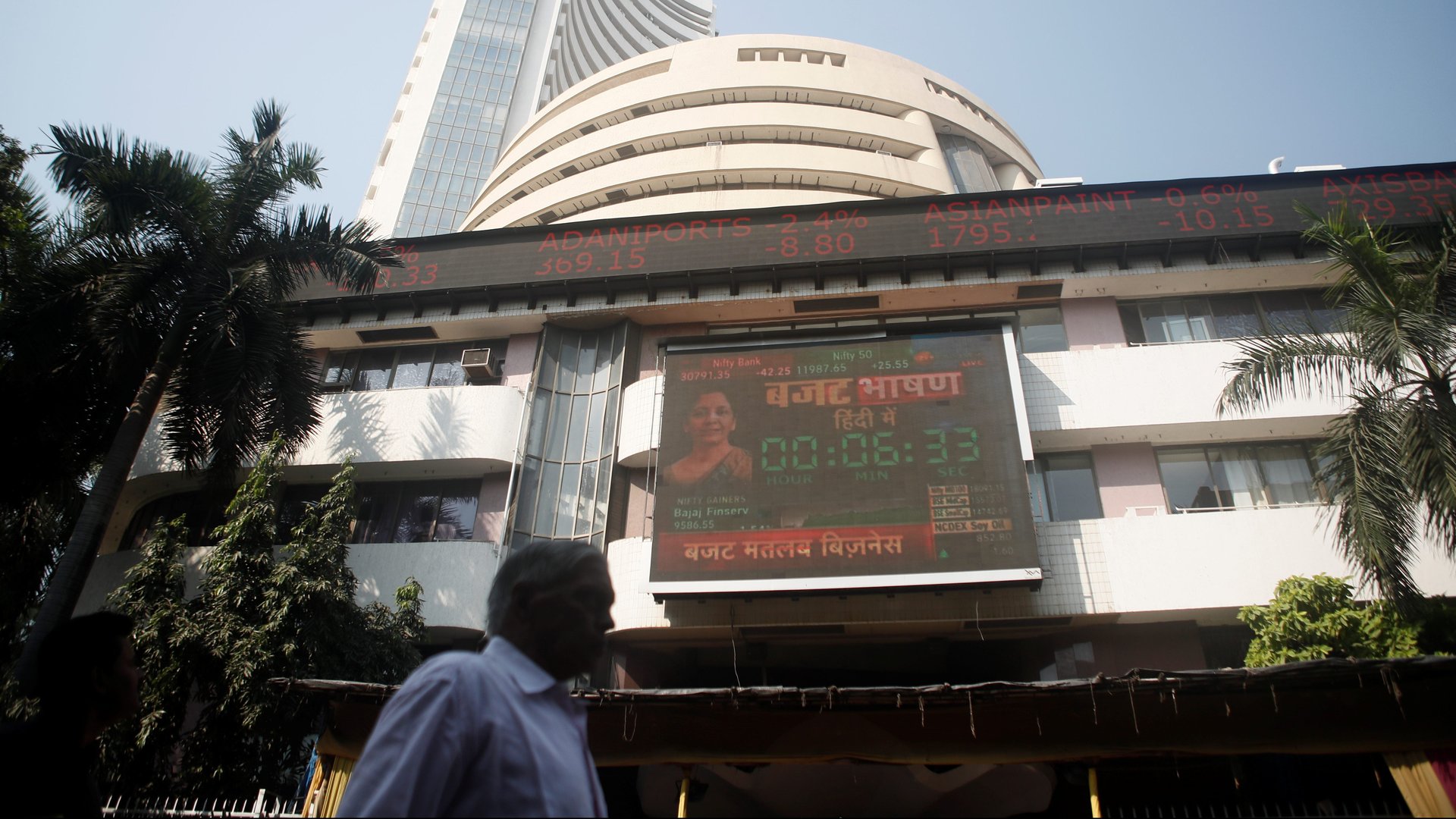Indian stock markets are going up when the economy is sliding down
The performance of India’s stock markets in recent weeks has proved, yet again, that there is little connection between what happens to the real economy and how investors bet on shares.


The performance of India’s stock markets in recent weeks has proved, yet again, that there is little connection between what happens to the real economy and how investors bet on shares.
Today (June 18), BSE’s benchmark 30-stock Sensex ended above the 34,000-mark, rising by 700 points, while NSE’s Nifty 50 index breached 10,000 points, rallying by around 200 points.
The stocks are surging even as the Indian economy is headed in the opposite direction.
Investors seem to be hoping for pent up demand and loose monetary policy to boost industries as India eases what was one of the most stringent lockdowns in the world. “Investors are banking on a global economic recovery, fuelled by central bank policy measures to support the respective economies,” said Vinod Nair, head of research, Kochi-based Geojit Financial Services in a note on June 5.
Meanwhile, India’s GDP growth slowed down to 3.1% in the January-March quarter. The Covid-19-triggered lockdown, which started on March 25 and is now being lifted in phases, is expected to have crippled the economy further.
Manufacturing and service sectors in the country are facing their worst nightmare, drastically contracting in April and May.
“With economic output set to fall enormously in the first half of 2020, it is clear that the recovery to pre-Covid-19 levels of GDP is going to be very slow,” said Joe Hayes, an economist at IHS Markit.
The government’s $266 billion pandemic relief package hasn’t instilled much confidence in credit rating agencies and economic forecasters.
On June 1, Moody’s downgraded the country to the lowest investment grade, which is just one step above junk status. Other rating agencies, too, aren’t optimistic about the Indian economy in the financial year 2021.
Now, analysts believe the stock market’s “irrational exuberance” may get a much-needed reality check once companies start posting their earnings for the months when the country was under lockdown.